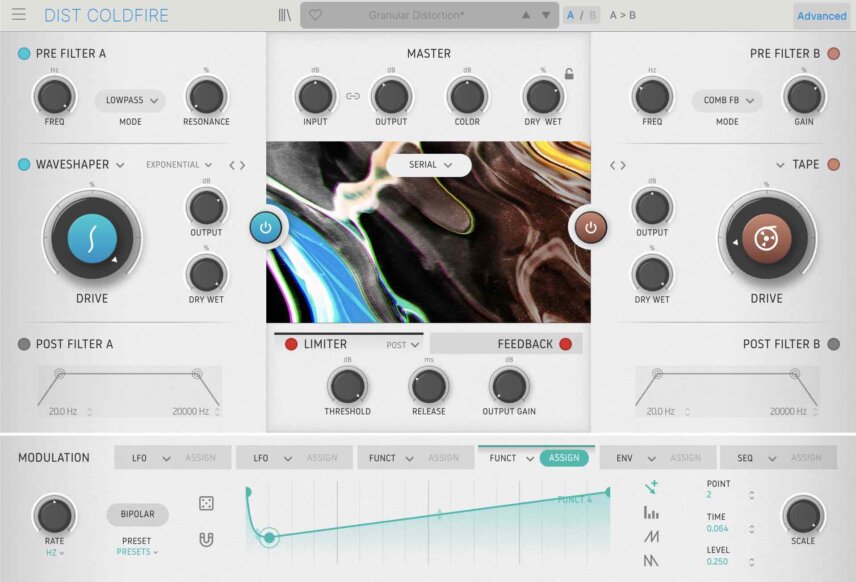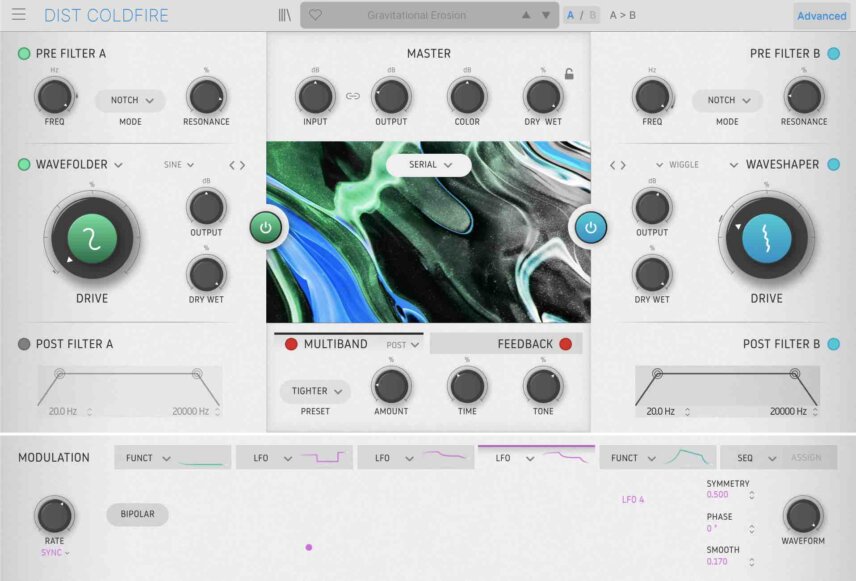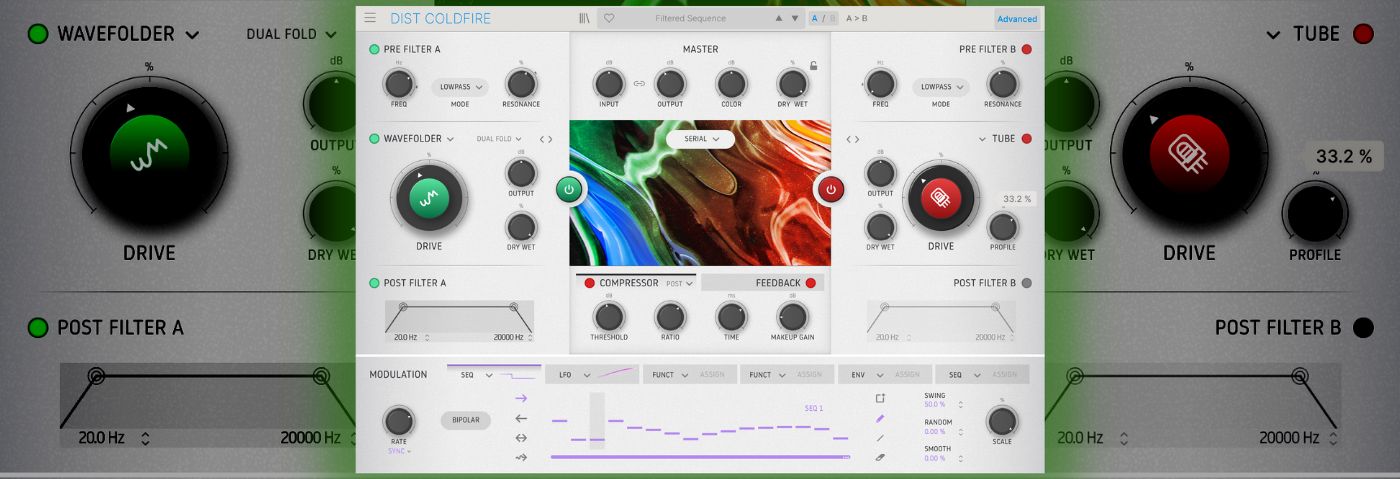With Coldfire, Arturia follow the recent success of their innovative Efx Fragments granular effect processor with a surprisingly fresh take on distortion plugin processing. We put it on the test bench for a thorough review.
When you’re looking to add some fuel to your fire, it’s a quick win to grab a distortion plugin. There are many on the market to choose from. If you’re serious about making a very modern techno sound, you’re going to find ample use for distortion, especially in the low frequencies in your track.
Carving your way into the market therefore can be a challenge but Coldfire by Arturia has pulled it off with aplomb. Following on from their intriguing Efx Fragments there is borrowed architecture but this time applied to distortion. We take a deeper look.
What is Coldfire?
Coldfire is primarily comprised of two distortion banks. Each bank offers 11 circuit types. Analog-modelled options include Tape, Tube, Germanium, Transistor, Force, and Transformer, while more digital options include a Waveshaper, Wavefolder, Rectifier, Bit Crusher, and unique Bit Inverter. Whichever circuit you select comes wth a variety of parameters for tonal experimentation.
Each model sounds excellent in isolation, offering everything from subtle harmonic inflation to extreme decimation. But where Coldfire really excels is with the unique blend modes. In the default serial mode, one distortion bank feeds into the other – but upon selecting Parallel mode, you can crossfade between your two selected distortion circuits.
For unique stereo enhancement, try the L-R stereo mode, or better yet, the Mid-Side mode – which could even open up some intriguing mastering applications if used judiciously. Perhaps the most creative blend option is the Band Split mode, allowing you to adjust a crossover slider with one distortion bank processing the frequency range below it and the other above for instant two-band madness.
Pre & Post Filters
Click the advanced mode to access Pre and Post filtration for each circuit. The Post filtration offers a simple High Pass / Low Pass combination to focus the distorted output, reduce brittle harshness, and remove rumble.

It’s the Pre filtration that offers more creative frequency processing, with the usual High, Low, and Band Pass alongside more creative Notch and Comb filters. The Comb filters in particular allow for powerful sound design, even before engaging the distortion itself – especially when used in combination with Coldfire’s powerful modulation section.
Advanced Mode
With advanced mode enabled, you can access Coldfire’s powerful bank of six modulators along the bottom of the GUI. Each modulator can operate as an LFO, signal-based envelope follower, free-form function generator, or sequencer. All four options are highly editable with powerful customization options – and even some randomization in the function or sequencer modes.
Except for the signal-based envelope follower, they can all be synchronized to a variety of flexible rates. And of course, they can all be easily assigned to nearly any parameter throughout the device with Arturia’s drag-and-drop functionality, making it a breeze to animate Coldfire’s ample distortion and saturation effects and really bring them to life.

A built-in feedback circuit allows for multi-dimensional dub-style manipulation. At the same time, a dedicated dynamics processor can be set to standard compression, multi-band compression, or limiting, allowing for even more intense gain-related processing – or simply to help avoid signal spikes.
Speaking of gain, you can boost the input dial to further overdrive the circuits – while a handy link function reduces the output gain while turning up the input in order to generate the desired harmonic boost without destroying your gain staging. A dry/wet blend can be locked in place to remain at its current setting while exploring the numerous presets, and an A/B toggle allows you to easily compare two different settings or presets without being fully committed to either one. Last but not least, a color dial allows you to adjust the primary focus frequency to which distortion is applied – yet another fun parameter to modulate.
Final Thoughts
Combining two remarkably high-quality distortion circuit models with a wealth of meticulous routing and modulation options, Coldfire provides a surprisingly unique take on sonic decimation, gently heating or severely mangling anything from drums or bass to synths, guitars, vocals and more. While it can occasionally be demanding on the CPU, anyone seeking a fresh approach to aggressive sound design may soon find it indispensable.
Coldfire is out now. Registered users can purchase Coldfire at a one-off introductory price, with discounts up to 50% off. All users will also have access to discounts on a bundle comprising FX Collection 3 + Dist ColdFire. Users can log in at arturia.com to unlock their exclusive discounts, available until Thursday, September 15th.
*Attack Magazine is supported by its audience. When you purchase through links on our site, we may earn an affiliate commission. Learn more.
The Verdict
Price: €99
Purchase: Arturia Coldfire
The Final Word
Highly creative, sound shaping distortion from the French giants.
While You’re Here…
If you like this article you might enjoy our book The Secrets of Dance Music Production. It is available from the Attack store!
New customer? Use code ATTACK10WELCOME at checkout for a 10% discount!

